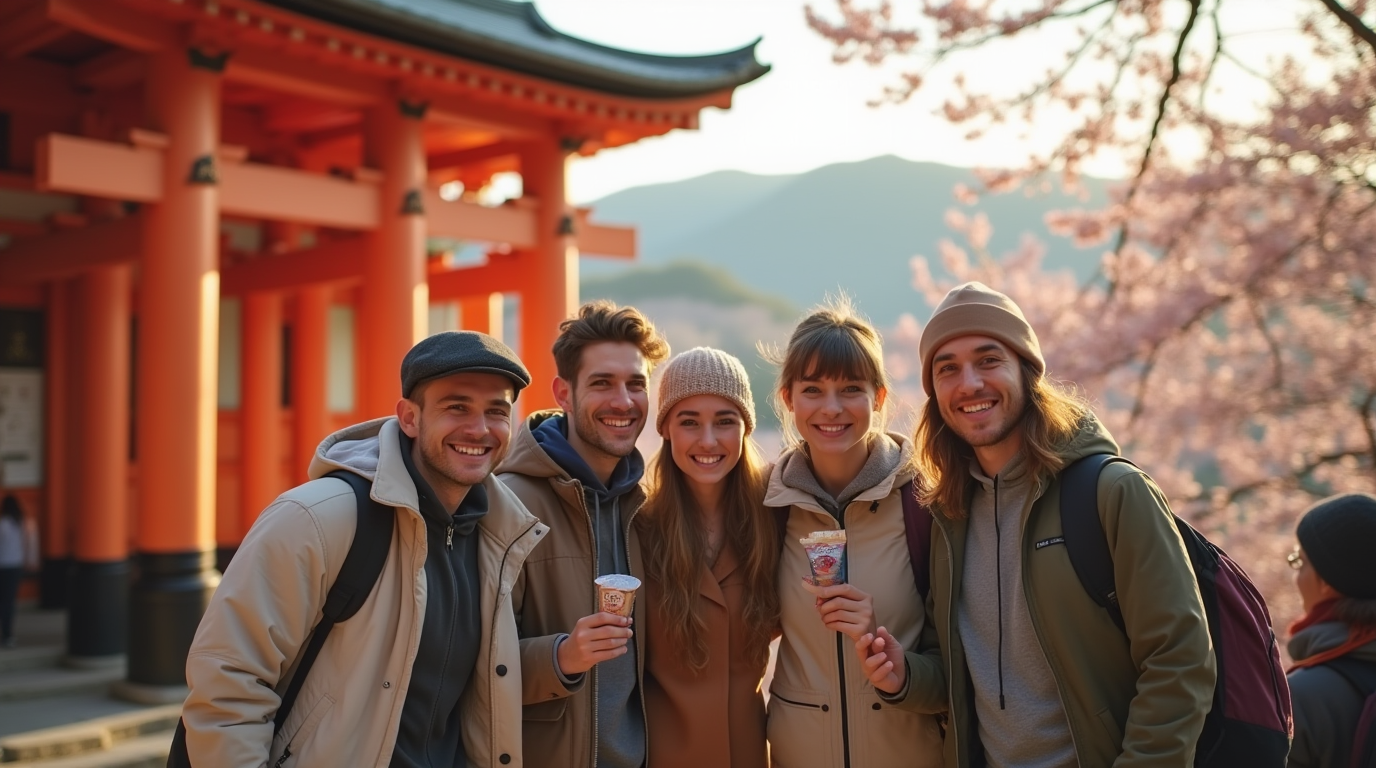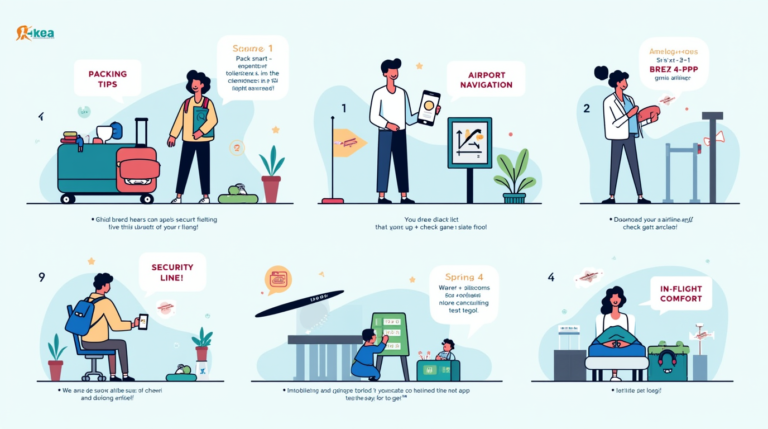Discovering Japan: Your Ultimate Travel Guide
Table of Contents
Introduction
Japan stands as one of the most coveted travel destinations in the world, blending ancient traditions with cutting-edge modernity [[1]]. From the serene beauty of Kyoto’s temples to the bustling neon streets of Tokyo, this island nation offers a wealth of experiences that cater to all kinds of travelers. However, planning your first trip to Japan requires careful research and preparation to fully embrace its rich culture, unique customs, and diverse attractions. With so much to explore, understanding the nuances of Japanese etiquette, practical logistics, and seasonal highlights will ensure a seamless and unforgettable journey.
Key Aspects of Japanese Culture: Mitigating Culture Shock
Basic Greetings
In Japan, bowing is the primary form of greeting, reflecting respect and humility. For men, the bow should be slightly deeper, while women typically perform a gentler incline. Tourists can opt for a simple nod, but business travelers are encouraged to practice proper bowing techniques. A small effort goes a long way in showing respect and appreciation for local customs.
Inside a Japanese Home
Japanese homes have specific rules rooted in cleanliness and respect. Upon entering, visitors must remove their shoes at the genkan (entryway) and replace them with slippers provided by the host. Separate slippers are often designated for bathrooms, and walking barefoot is considered impolite—always wear socks or indoor footwear.
Dining Etiquette
Dining in Japan comes with its own set of etiquettes designed to honor the meal and those who prepared it. When seated on tatami mats, remove your shoes beforehand. Use the wet towel (oshibori) to clean your hands before eating, and bring small bowls close to your mouth when consuming soup or rice. Shared dishes require the use of either serving chopsticks or the opposite end of your personal chopsticks. At the end of the meal, replace lids on dishes and return chopsticks neatly to their holders. Payment is usually made at the cashier rather than the table, and cash remains widely accepted despite increasing card usage.
Basic chopstick usage also has its dos and don’ts: hold them towards the middle, avoid sticking them upright in rice (a funeral taboo), spearing food, pointing, or playing with them.
Bathrooms in Japan
Japanese public restrooms feature both traditional squat toilets and Western-style flush toilets. In either case, users will find buttons labeled “小” (small flush) and “大” (large flush). Notably, toilet paper isn’t always provided in public facilities, so carrying tissues is advisable.
Etiquette at Temples and Shrines
Temples and shrines serve as sacred spaces for reflection and prayer. Visitors are expected to maintain calm and respectful behavior. Sick individuals or those in mourning are discouraged from visiting. At temples, short prayers may accompany offerings placed in donation boxes, and shoes may need to be removed depending on the site. At shrines, purification rituals involve rinsing hands and mouth using ladles at water fountains. The sequence of bowing twice, clapping twice, then bowing again concludes with silent prayer. Photography is generally allowed outdoors but prohibited indoors; always check signage for guidance.
Practical Travel Information
Traveling Without Knowing Japanese
While English signage is common in tourist areas, learning basic Japanese phrases enhances interactions and demonstrates cultural sensitivity. Useful expressions include greetings like konnichiwa (hello) and polite requests such as sumimasen (excuse me). Apps like Duolingo can aid language learning, and any attempt to communicate in Japanese is deeply appreciated due to the concept of omotenashi (selfless hospitality).
Japanese Currency and Exchange Rates
Japan operates largely as a cash-based society, though major credit cards are accepted in urban centers. Travelers should carry Japanese yen (JPY), which can be exchanged at banks, post offices, select hotels, or via ATMs located in 7-Eleven stores. Avoid exchanging currency at airports, where rates tend to be less favorable. As of 2024, the exchange rate stands at approximately ¥150 to $1 USD and ¥170 to €1 EUR .
Cost of a One-Week Trip
For budget-conscious travelers, an 8-day trip to Japan can cost under $1,700 USD, including airfare, accommodation, transportation, meals, and insurance. Airlines like Air China frequently offer competitive fares, while travel medical insurance plans start around $30–$50 USD per week [[4]].
Japan Visa Requirements and Travel Vaccinations
U.S. citizens enjoy visa exemptions for stays up to 90 days, provided they possess valid passports and proof of onward/return tickets. Amounts equivalent to or exceeding ¥1 million JPY must be declared upon arrival. No vaccinations are required for U.S. travelers, though staying updated on routine immunizations is recommended.
Best Time to Visit
Spring (late March to mid-May) reigns supreme as the ideal season to visit Japan, thanks to the iconic cherry blossoms . Fall offers temperate weather and stunning foliage, making it another excellent choice. Summer brings heatwaves and typhoons, particularly in Okinawa, though prices are lower during this period. Winter transforms Hokkaido into a snowy wonderland perfect for skiing enthusiasts .
Destination Guide
Four Main Islands
Japan consists of four primary islands: Hokkaido, Honshu, Shikoku, and Kyushu. Each offers distinct landscapes and attractions.
- Hokkaido: Known for its winter sports and vibrant Sapporo Snow Festival.
- Honshu: The largest island, home to Tokyo, Kyoto, Osaka, and Hiroshima. Divided into regions like Kanto, Kansai, and Tohoku, it boasts key historical sites and modern metropolises.
- Shikoku: Smaller yet charming, devoid of active volcanoes.
- Kyushu: Rich in natural hot springs (onsen), Nagasaki’s history, and proximity to Okinawa .
Travel Logistics
Getting to Japan
International flights arrive at four main airports: Narita, Haneda, Kansai, and Central Japan Airport. Direct connections exist from major global cities, with one-stop options available for smaller hubs.
Where to Stay
Accommodation ranges from luxury hotels to budget-friendly hostels and traditional ryokan. Airbnb listings provide flexible choices, while top-tier properties in Tokyo, Sapporo, and Kyoto cater to high-end preferences .
Transportation Within Japan
Japan’s extensive rail network, coupled with ferries and domestic flights, ensures efficient travel across islands. The Japan Rail Pass simplifies intercity journeys, especially for tourists exploring multiple regions.
Things to See and Do
From Tokyo’s Imperial Palace and Shibuya Crossing to Kyoto’s historic shrines and Osaka’s culinary delights, Japan brims with must-see landmarks. Highlights include Hiroshima’s Peace Memorial Park, Miyajima Island’s floating torii gate, and countless UNESCO World Heritage Sites scattered throughout the country.
Food and Dining
Japanese cuisine balances simplicity and sophistication, featuring staples like white rice, fresh seafood, and pickled vegetables. Fast food innovations, craft beer, and coffee culture add contemporary flair. Dining options span high-end restaurants to affordable convenience stores and vending machines. Supermarkets remain the cheapest option for groceries, while localized adaptations of global chains delight curious palates.
Background Information
Japan’s storied past dates back to 660 BCE, marked by feudalism, expansionism, and war. The Meiji Restoration ushered in an era of unification and modernization, laying the groundwork for post-WWII economic growth and social stability. Local festivals and regional identities celebrate Japan’s enduring spirit, making it a truly remarkable destination.







